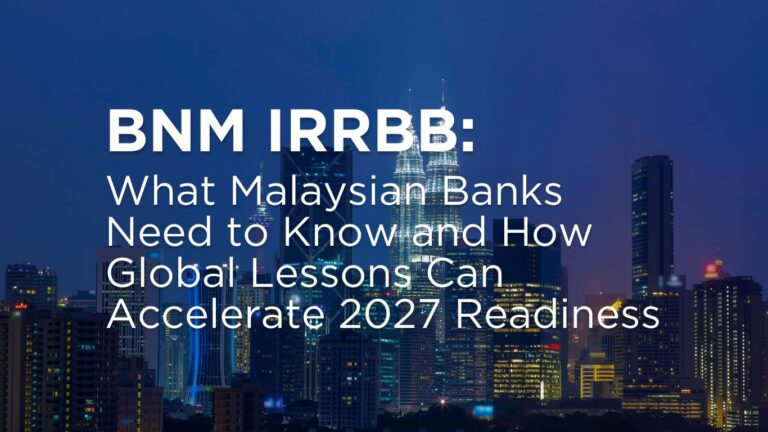The current co-existence of the international Accounting framework for loan loss provisioning (IFRS 9) and the Regulatory framework (Basel 4) creates overhead due to inconsistencies between the two sets of regulation. Yet, the similarities and overlaps are probably more fundamental than the differences. All things considered, IFRS 9 and Basel 4 cannot be easily de-coupled.
Lessons Learned from IRB Models
This summer, the European Banking Authority (EBA) published its roadmap for its post-implementation review of IFRS 9 with the aim of investigating potential variability in the output of the IFRS 9 Modelled risk parameters (PD, LGD, EAD). Large variability in model outputs was one of the main reasons for the IRB revisions of the Basel framework as well as for the introduction of the SA output floor.
Evidence of this variability was provided during the post crisis EBA stress tests, where even for a benchmark list of counterparties having the same risk profile across the sample banks, resulting PDs under stressed conditions were found to be vastly different among the participating IRB banks.
Disappointingly, much of it could not be explained other than by idiosyncratic modelling assumptions resulting in large variations of the risk parameters (e.g. PDs). If current models were successful in estimating probabilities of default based on risk drivers, then one would expect comparable outcomes (PDs) across banks for the same counterparties.
Since this expectation was not met, it was clear that changes were required in how banks developed their models.
ECL Variability
Given this history, it is no surprise that supervisors in general are keen to investigate if a similar level of variability is witnessed in the reported ECL numbers under the IFRS 9 financial reporting standards. Expectations of similarly high variability of modelled PDs as was witnessed for Basel can be assumed for two reasons.
Firstly, bank leverage their existing IRB Models where possible as a starting point for their IFRS 9 compliant forward-looking PD curve generation. Hence the observed variability in IRB model results will be carried forward to the IFRS 9 outcomes.
Secondly, SA banks have gone through the IFRS 9 modelling exercise without, in many cases, having much experience in PD, LGD or EAD modelling.
This lack of experience does mean that there is no agreed industry practice, let alone a best practice that can support a certain level of consistency across SA banks in their modelling of certain portfolios or segments.
Regulatory and Accounting Provisions
Moreover, the Basel Committee for Banking Supervision (BCBS) has been active in trying to close the gap between the so called regulatory and accounting provisions that was created by the fundamentally different definitions under the 2 frameworks.
That ambiguity in definition is not only counter-intuitive, but also downright confusing for financial institutions (e.g. SA banks) on how to account for their provisions, for example because the split between specific and general provisions does not exist under IFRS 9 and it is not specified on how SA banks should report this split under IFRS 9.
On top of this lack of consistency in definition, there is also uncertainty on the impact of the ECL provisions on the CET1 capital, both on and after IFRS 9 adoption. It is for this reason that the BCBS proposed transitional arrangements allowing the amortization of both the first-time adoption impact as well as the on-going impact for up to 5 years (some supervisors have shortened that period to 3 years, e.g. Bank of Thailand).
The December 2018 IFRS 9 post-implementation impacts study of EBA showed that most of the European banks made used of the 5-year transition period to spread out the regulatory capital impact of IFRS 9 adoption, at least for the static or first-time adoption impact.
ECL and Basel Pillar 3 Reporting
Pillar3 reporting includes both the regulatory as well as the fully loaded ECL accounting model capital ratios. Both ratios are required to provide a full picture of the impact of the transitional arrangements from 1st January 2019. Likewise, the Pillar3 reports also require banks to split the ECL provisioning amounts in specific and general provisions under the standardized approach.
Both are concrete examples where IFRS 9 and Basel 4 overlap on the reporting side (on top of the overlap on the RWA calculation side due to shared model (inputs)). The EBA’s consultation on its Pillar3 disclosures as published this month also includes a full reconciliation between accounting and regulatory own funds (requirements).
Conclusion
The Basel regulatory framework and the IFRS 9 framework currently co-exist somewhat uncomfortably. Both are overlapping in both their intent (providing transparency and consistency globally while promoting financial industry resilience to crisis events), as well as in their methods.
It is logical that there is a need to further align both frameworks to get rid of inconsistencies and promote the links or dependencies between both. It is therefore to be expected that both frameworks will continue to be finetuned in order to achieve this alignment.
The implication on banks is that both IFRS 9 and Basel 4 are moving targets, since they are not in a final stage. When deciding on how compliance with both framework fits with the medium to longer term IT (architecture) strategies, those ongoing changes should be considered as they mandate a certain system flexibility to address upcoming alignments of the respective solutions.
Making sure the flexibility is supported in the current set-up will not suffice. In the longer term, the final goal should be to work towards an integration between both frameworks, where there is no longer a distinction between accounting and regulatory provisions, etc… but rather one solution that provides the integrated processing of both capital and provisioning in BAU or simulated or stressed scenarios.




